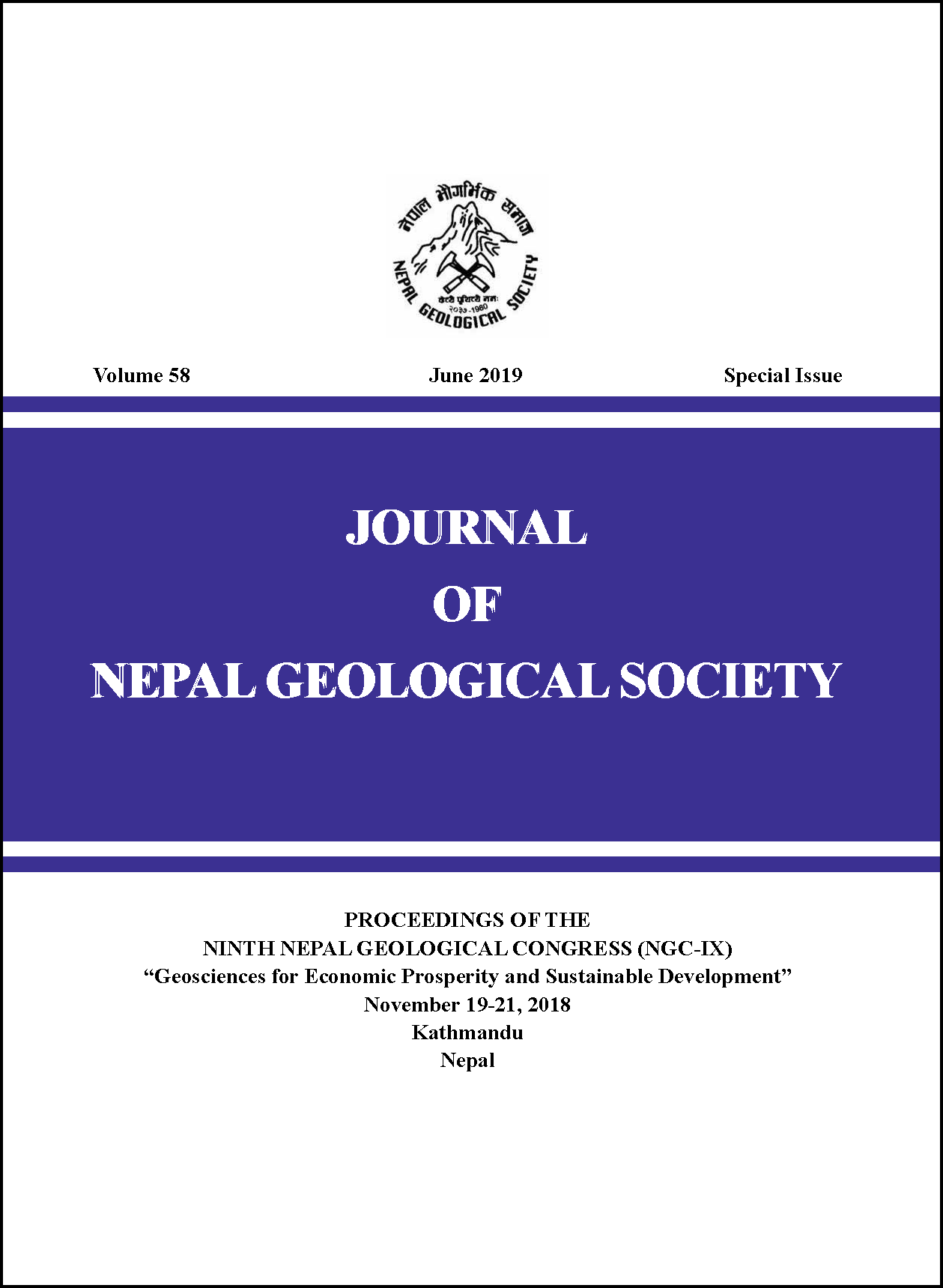Engineering Geological Investigation of dam site of proposed Sunkoshi-2 Hydropower Project, Khurkot area, eastern Nepal
DOI:
https://doi.org/10.3126/jngs.v58i0.24603Keywords:
Discontinuity Survey, Tawa Khola Formation, Rock Mass Characterization, RMR, DMRAbstract
The dam site of proposed Sunkoshi-2 Hydropower Project and its surrounding mainly comprise the Tawa Khola Formation, which is the basal formation of the Bhimphedi Group. Although garnet schist and micaceous quartzite bands are the main rock types; three rock units namely- Schist Unit, Quartzite Unit, and Gneiss Unit were identified. Engineering geological mapping followed by discontinuity survey were carried out. The result exhibited differences in fracture intensity and discontinuity characteristics of rock masses according to rock type. Since joint orientations were found to be consistent over fairly large areas, surface studies of joints were used in predicting subsurface orientations. Rock mass classification was made in line with the Rock Mass Rating System (RMR) and the Dam Mass Rating (DMR) classification for the dam foundation. The rock masses were classified onto fair to good rock classes according to RMR value. Dam foundation analysis regarding stability against sliding using DMR classification helped in selection of suitable dam-axis among two alternatives. Water Quality Standards (2005).
Downloads
Downloads
Published
How to Cite
Issue
Section
License
© Nepal Geological Society




